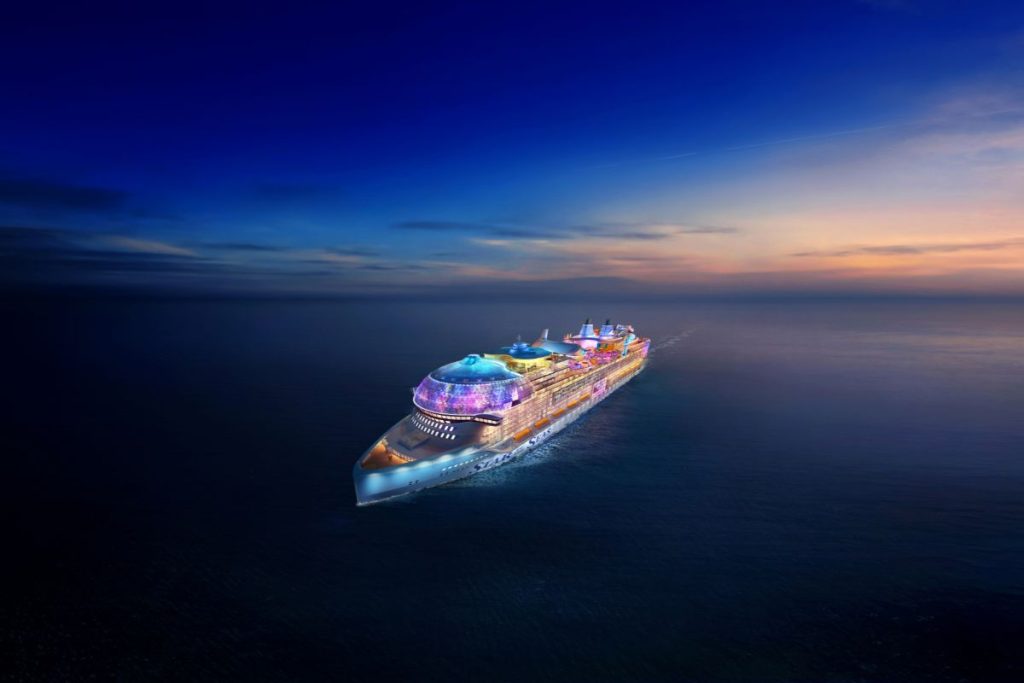Royal Caribbean has made a significant announcement with the unveiling of the name of its second Icon-class cruise ship. The highly anticipated vessel, named Star of the Seas, is set to launch in summer 2025, following its predecessor, the Icon of the Seas.
Innovative Design and Environmental Focus
The Star of the Seas is being constructed in Turku, Finland, and represents a leap in sustainable cruising. The ship will be powered by liquefied natural gas (LNG), marking it as Royal Caribbean’s third LNG-powered vessel. Its design integrates a range of environmental initiatives, such as waste heat recovery systems and shore power connections, contributing to the company’s ambition for net-zero emissions by 2035.
A Response to Rising Demand
Royal Caribbean has witnessed unprecedented consumer demand, prompting an early release of its 2025-2026 vacation itineraries for Icon-class vessels. Michael Bayley, Royal Caribbean’s president and CEO, noted that the notion of creating an ultimate adventure by blending various types of holidays has fueled more anticipation than expected.
This demand has not only influenced the scheduling but also solidified the strategic release of Star of the Seas, positioning it to capture the thriving market interest. Such enthusiasm highlights a strong appetite for innovative and environmentally conscious travel options.
Strategic Planning and Market Positioning
The strategic planning behind the Star of the Seas demonstrates Royal Caribbean’s commitment to sustainability while meeting consumer desires. By advancing the launch schedule, the company aims to capitalize on the current travel trends.
The vessel’s introduction will align with Royal Caribbean’s broader business strategy, targeting both existing and new markets. This aligns with their continuous drive to enhance customer experiences while maintaining a focus on sustainable practices.
The Star of the Seas promises to deliver an unmatched adventure at sea, drawing on Royal Caribbean’s rich tradition of innovation and excellence in service.
Technological Advancements on Board
Apart from its superb environmental credentials, the Star of the Seas will feature cutting-edge technologies. These advancements are not just limited to its energy systems but extend to interior functionalities that redefine passenger comfort and entertainment.
Royal Caribbean assures that passengers will experience enhanced connectivity, enabling a seamless digital experience on board. Such innovations are in line with the industry trend to integrate smart technology, thereby elevating the overall holiday experience.
Building on Icon-Class Success
The Icon of the Seas set a new industry standard with its state-of-the-art amenities and eco-friendly features. The Star of the Seas will continue this legacy, advancing further with innovations in cruise travel.
Royal Caribbean’s focus on blending the best of holiday experiences—combining relaxation, adventure, and entertainment—into one journey is central to their design philosophy.
The Future of the Cruise Industry
Royal Caribbean’s move to name its second Icon-class ship reflects broader trends in the cruise industry towards sustainability and innovation. The Star of the Seas is part of a larger narrative of change within the industry.
This move signals the company’s role as a leader in eco-friendly cruising, setting benchmarks for others to follow. As the cruise industry gradually shifts towards sustainable solutions, Royal Caribbean remains at the forefront of this pivotal transformation.
Anticipation for 2025 Launch
Set to debut in summer 2025, the Star of the Seas is eagerly awaited by industry observers and travellers alike. The excitement builds as more details about its features and itineraries will be revealed.
As Royal Caribbean continues to innovate and expand its fleet, the anticipation surrounding the Star of the Seas underscores the importance of forward-thinking designs in shaping the future of cruise travel.
Royal Caribbean’s introduction of the Star of the Seas marks a significant milestone in its commitment to innovative and sustainable cruise travel. As the industry evolves, such advancements set new standards for eco-friendly and passenger-centric cruising, promising a bright future for the company and the broader cruise sector.

